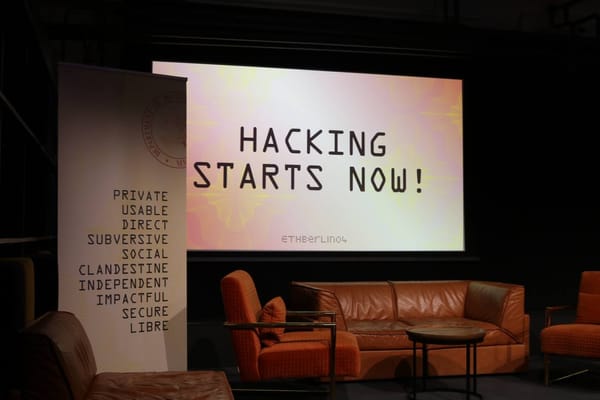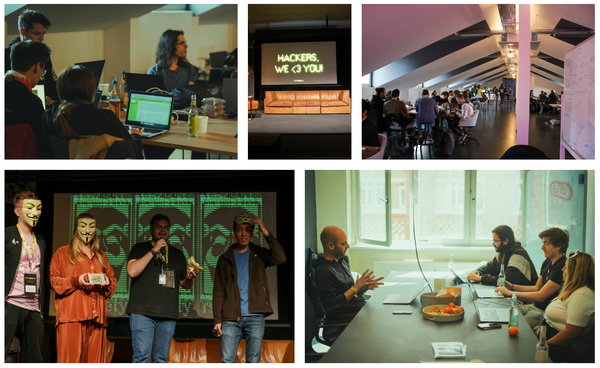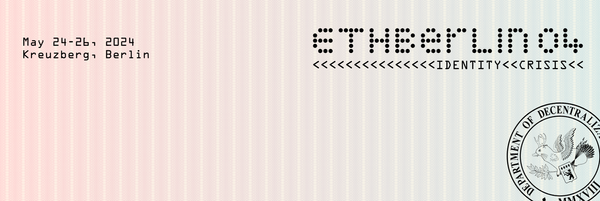Putting our money where our mouth is: DoD seeds Blockstars first round with 15,000 DAI
Last month at Goerlicon we announced our collaboration with B9lab’s Community Blockstars programme to enable more developers to become…

Last month at Goerlicon we announced our collaboration with B9lab’s Community Blockstars programme to enable more developers to become members of the Ethereum community regardless of their background. 1500 developers from over 100 countries applied and the feedback has been great… mostly.
We have to be honest, and voicing our frustrations as well as our achievements is important, in order to give people the whole picture of what we have been learning through this experience: with the market in the current state and dreams of Ether at a much higher value just around the corner it has been difficult to find sponsors for the programme. Everyone is hunkering down and hoping for the low to pass.
But we believe that it is important to keep improving the community, attract more people with different ideas and make sure that we have enough talent to build everything that we dream of, and that has been promised, and more.
As mentioned, we understood the big obstacle that was blocking the program from kicking off, and we took it into our own hands to make sure that this would happen. Therefore, we have committed 15,000 DAI to kickstart the program. . Our seed funding enables 15 students to take part in the course, and together with b9lab’s sponsorship matching, that means another 15 students can take the course. In total, 30 developers will be taking the Blockstars course for free, and upon completion, be ready to join the ecosystem thanks to this initial funding effort.
The course is in its second week, so this cohort of 100 students are getting their first taste of how Ethereum works under the hood and how all the parts fit together.
Students hail from all over the world! We’ve got developers from Central Asia, East Asia and Pacific, Europe, Latin America, Middle East and North Africa, North America and South Asia in this first run. Many of the students are from all over Europe but we’re working with local partners all over the world to spread the word locally outside of our usual channels.
While the DoD is the biggest sponsor the programme has received donations from iExec, Pegasys and JPMorgan. As part of the technical sponsorship, the B9lab team will be building educational content for the sponsor’s tech and add it into the course as a treat for the students.
But this is just the beginning! We are planning a second cohort with B9lab for May. We made a big commitment to make the first cohort fly, so we will need you to carry the torch. If you want to help students achieve their dream and get some great content in front of hundreds of developers in the process, hit us up!
Even though this cohort is not as large as we expected, it is enough to prove that the efforts towards onboarding new devs into the space are up and running and both B9lab and DoD will continue working to reach our goal of 1000 new trained talents.
It is core to generate a wider accessibility of educational resources to for as many people from different backgrounds as possible. The Ethereum community is already one of the most diverse communities in the Blockchain industry, but there is much more work to be done. More people joining the community with a high level of skill will bring more new ideas and this will mean we can sustainably build infrastructure for everyone, and continue enhancing our tech.
We have gathered quite a lot of constructive feedback in regards of the program, so we would like to add some of it here, quoting Elias, our Education lead and co-founder of B9 lab:
“The program is designed to test for basic programming and problem-solving skills and includes a few questions where we’re trying to gauge how easily a developer can switch to a different programming paradigm.
The screening test has a time limit of about an hour and we do cheating and plagiarism testing. Then we select the best applicants. This is by no means perfect but in the past, it has worked pretty well, we’ve consistently ended up with awesome cohorts.
In terms of testing and certification during the course: We have a few quizzes for self-testing and a range of hands-on coding challenges. We lean on those heavily because they are designed to seem easy at first but to reveal a lot of the inherent things to look out for when developing with Solidity. We do code review through our mentors on those submissions. This works really really well — I’d say our most powerful method.
The conversation that ensues in the code review comments between student and instructor tends to make a lot of things click.
Finally, the certification exam contains an essay exercise where students have to conceptualise a solution to the exam problem and then implement it. They build a full dapp and deploy it. We review the code and the running dapp and if they pass 80% we certify them.”
We are honored and proud to support this educational programme and are looking forward to seeing the new members of the community in the making. Please stay tuned, as we will publish a new update after the first cohort completes the course




